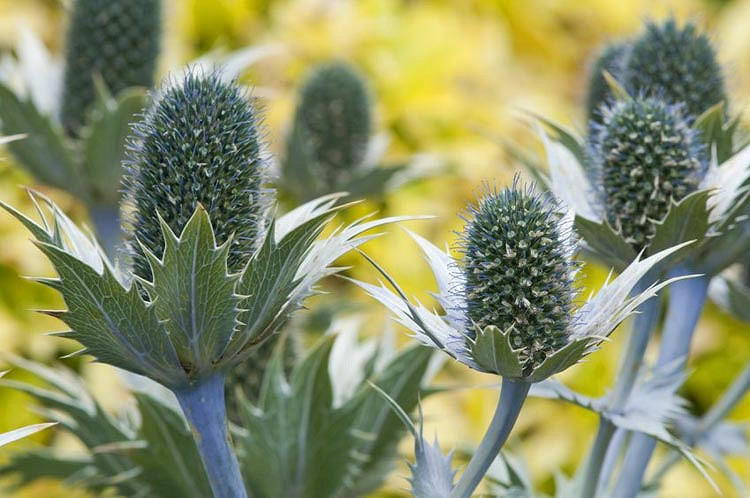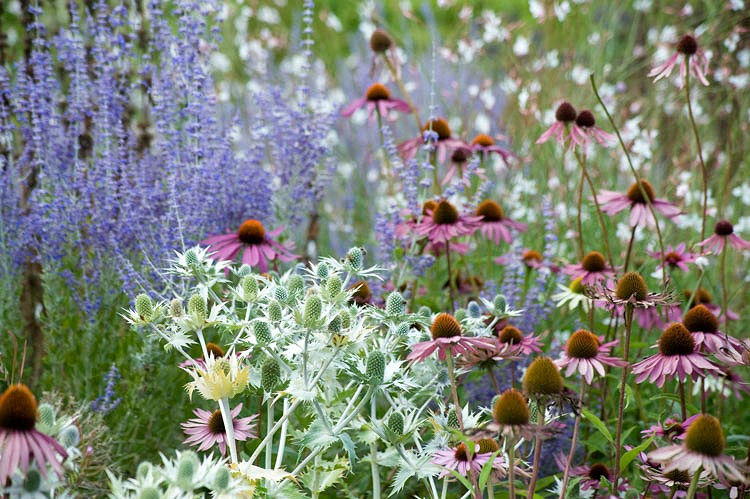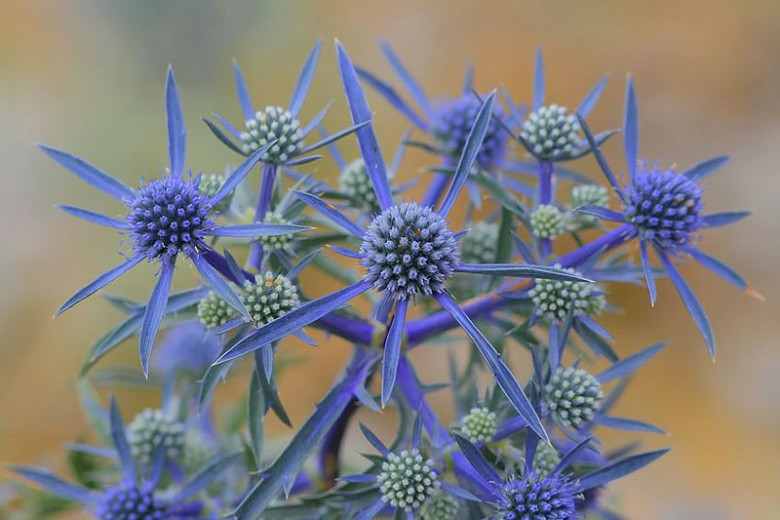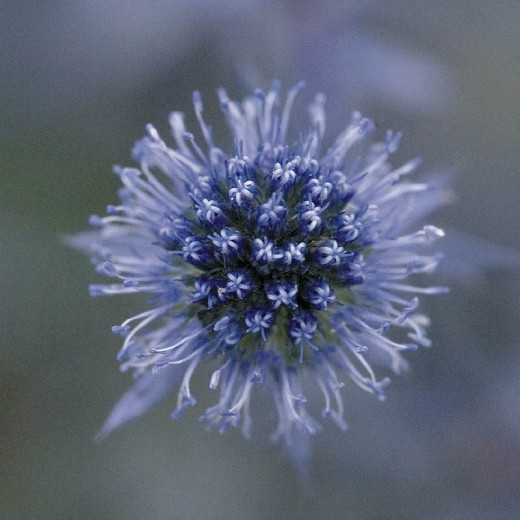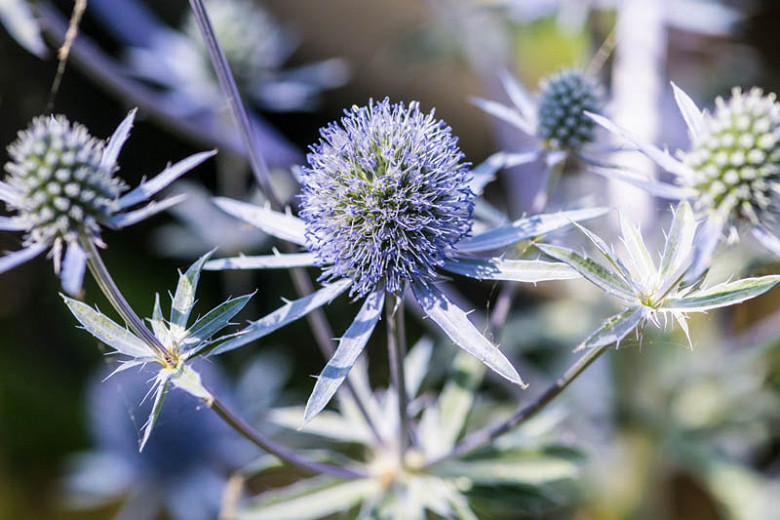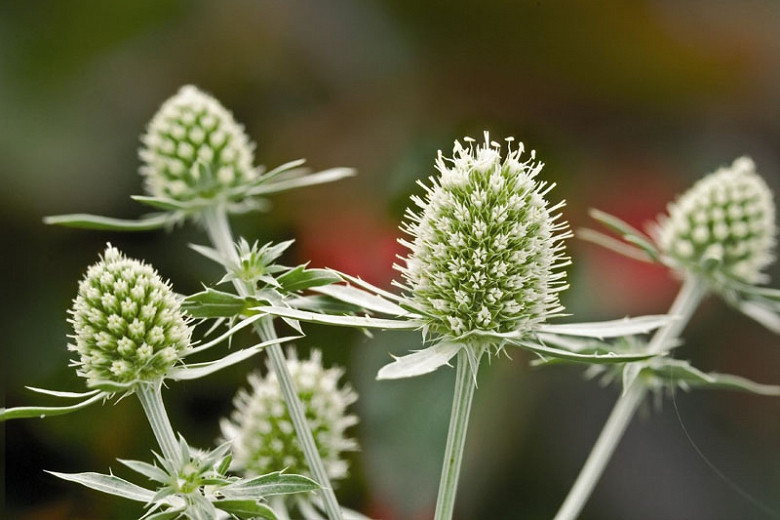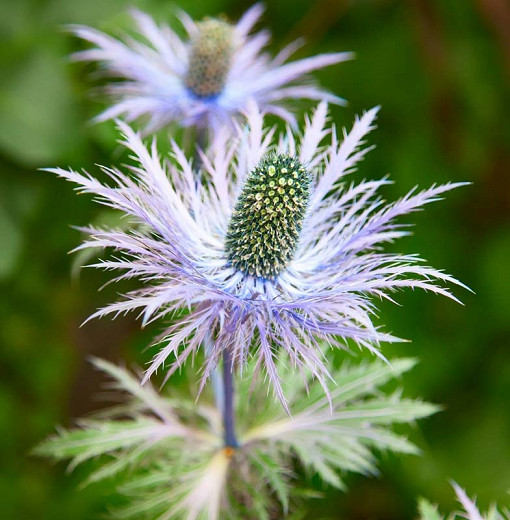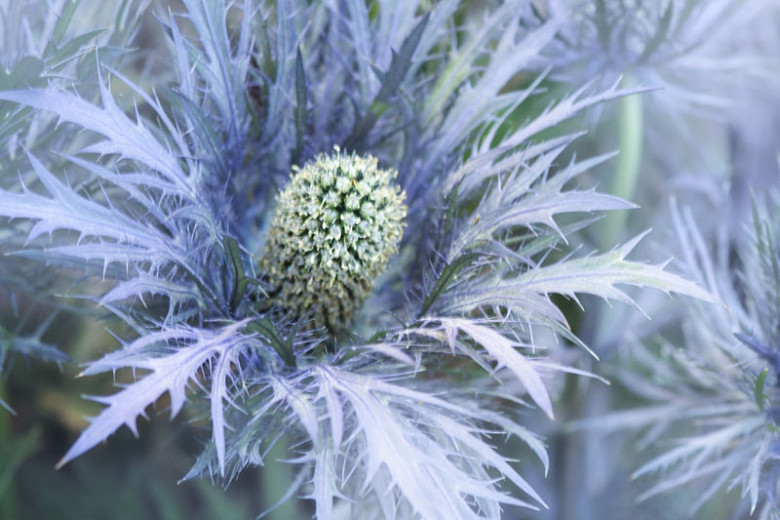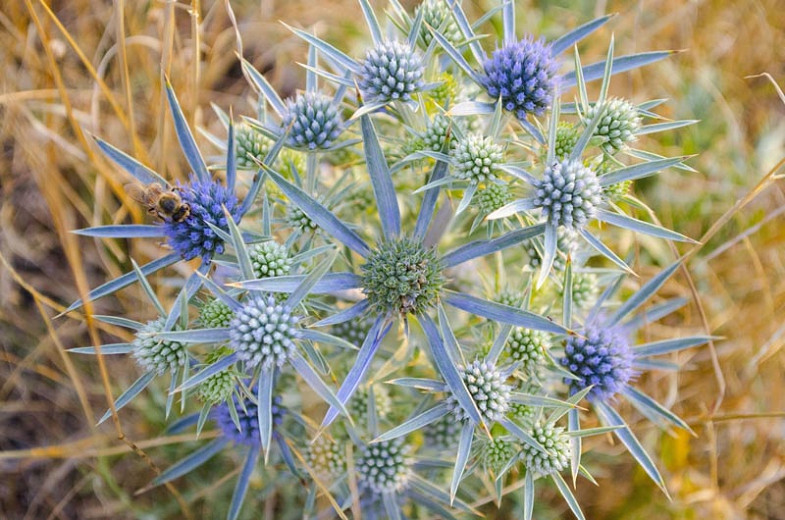Eryngium giganteum (Miss Willmotts Ghost)
With its luminous spiny collar of silvery-white bracts surrounding an egg-shaped flower head and tightly packed with flowers, initially pale green, then changing to steel-blue, Miss Willmott's Ghost (Eryngium giganteum) is quite a catch and an asset to any garden! Rising atop a basal rosette of heart-shaped green leaves, this short-lived perennial or biennial self-sows generously and remains in the garden year after year for our utmost pleasure. Easy to grow, low care, pest and trouble-free, Miss Willmott's Ghost lights up the garden throughout summer. Its beautiful texture and unique color, coupled with its long-lasting flowering make it a favorite of gardeners! Bees, butterflies and beneficial pollinating insects love it too, while deer and rabbit tend to dislike it.
- Growing in clumps of stiffly erect, branched stems up to 3-4 ft. tall (90-120 cm), this short-lived perennial prefers full sun locations and enjoys dry, well-drained soils. Tolerates poor soils. Avoid planting this plant in moist and fertile soils, where it will tend to sprawl and may require support. Drought tolerant
- Recipient of the prestigious Award of Garden Merit of the Royal Horticultural Society
- Excellent choice for beds and borders or naturalistic plantings, where the steel blue flowers and silvery foliage will superbly complement the vibrantly colored summer flowers. Perfect for coastal gardens, cottage or city gardens.
- Deadhead spent flowers to prevent undesired self-seeding.
- Transplants poorly and is best left undisturbed once established.
- This plant was named after Ellen Willmott, an eccentric English gardener who loved it so much that she secretly dropped seeds in the gardens she visited without telling anyone and the plants would mysteriously appear later
Requirements
| Hardiness | 4 – 9 |
|---|---|
| Heat Zones | 1 – 11 |
| Climate Zones | 1, 1A, 1B, 2, 2A, 2B, 3, 3A, 3B, 4, 5, 6, 7, 8, 9, 10, 11, 12, 13, 14, 15, 16, 17, 18, 19, 20, 21, 22, 23, 24, H1 |
| Plant Type | Perennials |
| Plant Family | Eryngium – Sea Hollies |
| Exposure | Full Sun |
| Season of Interest | Summer (Early,Mid,Late) |
| Height | 3' – 4' (90cm – 120cm) |
| Spread | 2' – 3' (60cm – 90cm) |
| Spacing | 24″ – 36″ (60cm – 90cm) |
| Water Needs | Low |
| Maintenance | Low |
| Soil Type | Loam, Sand |
| Soil pH | Acid, Alkaline, Neutral |
| Soil Drainage | Well-Drained |
| Characteristics | Cut Flowers, Plant of Merit, Showy |
| Tolerance | Deer, Drought, Rabbit, Dry Soil |
| Attracts | Bees, Butterflies |
| Garden Uses | Beds and Borders |
| Garden Styles | City and Courtyard, Coastal Garden, Gravel and Rock Garden, Informal and Cottage, Prairie and Meadow |
